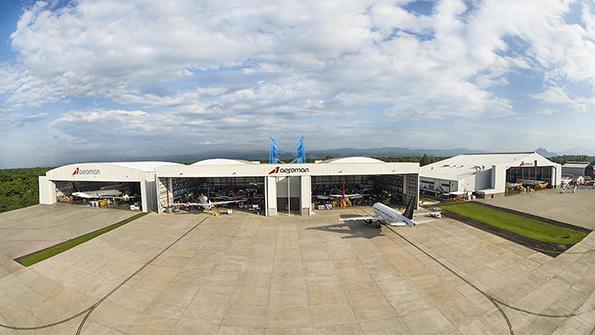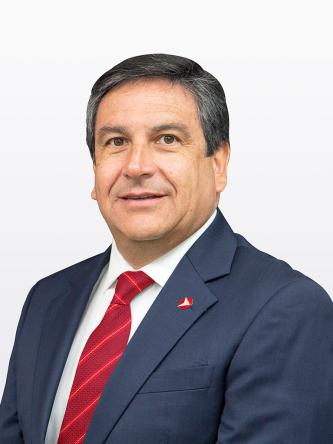
Alejandro Echeverria, CEO of Aeroman, spoke with MRO Executive Editor Lee Ann Shay about the El Salvador-based MRO’s capacity and growth plans.
What’s new at Aeroman?
We inaugurated an extension to the hangar we built in 1996, which allows us to position eight aircraft now instead of five. And in Hangar 4, we added four positions, so in total we added seven slots last year. That gives us 46 total slots. Our customers have supported our growth plans, and I feel we have a good relationship with them. It goes beyond a transaction, but we need to continue building those relationships if we want to continue growing.

Are all 46 lines full?
Yes—the demand is there, and there is pressure to continue growing. But that is a serious equation for Aeroman and [parent company] MRO Holdings because when you grow too fast, you may have productivity, quality and safety issues. We spend a lot of resources and efforts to continue fostering the culture that has made Aeroman successful. Each year we bring in new people, so the challenge is transferring and maintaining our culture of productivity, quality first, safety first.
How far out are you booked?
We’re full this year, and if nothing changes, 2024 is the same. There’s pressure for additional space.
Are you planning an expansion?
We always consider growing, and we have the foundations for it—we have the space, training program, apprentice program and support from our customers. I hope we can continue developing additional infrastructure.
You have the land?
Yes, we have a concession from the airport authority to build two or three additional hangars.
Is Aeroman planning to add any new capabilities?
There is an interesting market demand for cargo conversions and modifications. We are examining the opportunities. Because MRO Holdings has four locations, if Aeroman cannot take a portion of the work, some of the other locations might be able to do so.
How does overflow MRO work move between the facilities?
That’s something MRO Holdings administers at the corporate office in Dallas. They do a good job managing the load here, and we have customers who are located in three or four facilities at the same time.
How many people are you actively recruiting and training?
Each year we bring in about 500 new people. The program takes 14-18 months to prepare a technician. The leaders and leads are doing a really good job of guiding the new technicians into the Aeroman culture.
It’s important to point out we have been trying to recruit women, and we’ve had very positive results—10% of our technicians are now female. Given that modern aircraft feature new technology, they are more convinced that they can generate a career in a challenging environment, with the changing technology.
What are some of the keys to success in increasing the number of female mechanics?
The human resources and communications departments are doing a good job of transferring the strategy. Strategy can’t only reside in offices—it needs to transfer to the people so they are aware of the mission, key issues, opportunities to train for growth, benefits, etc. They are also convincing girls that this is a good, new career. Old aircraft needed a lot of muscle and force, but with electronically operated aircraft, girls see the opportunity, and they are really good at it.
I remember seeing a soccer field on the Aeroman campus when I visited. You have since added a sports facility?
We had a soccer field and a basketball court, but we decided to expand it to four soccer fields, a running track, basketball courts and showers. It’s important for our people to see that we’re not just investing in infrastructure to continue growing the business, but also infrastructure to provide them with a nice environment in which to work. In Latin America, we are all soccer fans, so it’s nice to have five fields now. We have about 10 teams, and a lot of people are trying to play.



